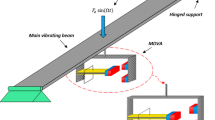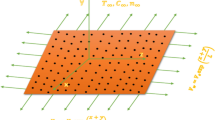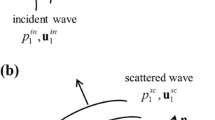Abstract
To minimize the power consumption of the piezoelectric micropumps utilized in the microfluidics field, suitable models are required to enable the optimization of the lead zirconate titanate (PZT) actuator driving circuits. The recent research shows that the electromechanical parameters of piezoelectric materials can be obtained from Butterworth Van-Dyke (BVD) model. The current study presents a novel time-domain measurement technique for extracting the parameters of a BVD electrical model describing a PZT actuator of the micropump excited by a square pulse with a relatively high voltage and low frequency. The validity of the BVD model is evaluated by using MATLAB software to solve the ordinary differential equations of the electrical model and then comparing the numerical results obtained for the current response of the PZT actuator with the experimentally-observed results. The BVD model has been found to be valid for this specific application of piezo actuators. A good agreement is observed between the two sets of result, and thus the validity of the BVD model and the proposed time-domain measurement technique is confirmed.








Similar content being viewed by others
Abbreviations
- v 1 :
-
applied driving voltage
- v 2 :
-
output voltage
- A :
-
the lowest voltage intensity of driving source
- N :
-
peak-to-peak voltage of driving source
- τ 1 :
-
rising time constant of driving source
- \( i_{{C_{0} }} (t) \) :
-
current passing through the capacitor branch
- i s (t):
-
current passing through the RLC branch
- i L (t):
-
output current
- t c :
-
the critical time
- \( v_{{C_{1} }} \) :
-
voltage difference across the C 1
- ω d :
-
under-damping resonant frequency
- α :
-
damping coefficient
- B 1 :
-
the cosine coefficient of homogeneous solution of \( v_{{C_{1} }} (t) \)
- B 2 :
-
the sine coefficient of homogeneous solution of \( v_{{C_{1} }} (t) \)
- a :
-
the constant of specific solution of \( v_{{C_{1} }} (t) \)
- b :
-
the exponential coefficient of specific solution of \( v_{{C_{1} }} (t) \)
References
Ajitsaria J, Choe SY, Shen D, Kim DJ (2007) Modeling and analysis of a bimorph piezoelectric cantilever beam for voltage generation. Smart Mater Struct 16:447–454
Arnau A, Sogorb T, Jiménez Y (2000) A continuous motional series resonant frequency monitoring circuit and a new method of determining Butterworth-Van Dyke parameters of a quartz crystal microbalance in fluid media. Rev Sci Instrum 71:2563–2571
Bashir R (2004) BioMEMS: state-of-the-art in detection, opportunities and prospects. Adv Drug Deliv Rev 56:1565–1586
Doebelin EO (1990) Measurement systems application and design, 4th edn edn. McGraw-Hill, New York, pp 109–110
Hall DA (2001) Review nonlinearity in piezoelectric ceramics. J Mater Sci 36:4575–4601
Husband B (2004) Investigation for the operation of an integrated peristaltic micropump. J Micromech Microeng 14:S64–S69
IEC (1986) Measurement of quartz crystal unit parameters by zero phase technique in a pi-network (Part 1). International electrotechnical commission-IEC standard, publication 44–1, Geneva
Jang LS, Chao SH, Holl MR, Meldrum DR (2005) Microfluidic circulatory flows induced by resonant vibration of diaphragms. Sensor Actuator A 122:141–148
Jang LS, Li YJ, Lin SJ, Hsu YC, Yao WS, Tsai MC, Hou CC (2007) A stand-alone peristaltic micropump based on piezoelectric actuation. Biomed Microdevices 9:185–194
Kirmholtz R, Leedom DA, Mathaei GL (1970) New equivalent circuit for elementary piezoelectric transducers. Electron Lett 6:398–399
Laser DJ, Santiago JG (2004) A review of micropumps. J Micromech Microeng 14:R35–R64
Mason WP (1948) Electromechanical transducers and wave filters. D Van Nostrand, New York
Morris CJ, Forster FK (2003) Low-order modeling of resonance for fixed-valve micropumps based on first principles. J Microelectromech Syst 12:325–334
Muralt P (2000) Ferroelectric thin films for micro-sensors and actuators: a review. J Micromech Microeng 10:136–146
Naik RS, Lutsky JJ, Reif R, Sodini CG (1998) Electromechanical coupling constant extraction of thin-film piezoelectric materials using a bulk acoustic wave resonator. IEEE Trans Ultrason Ferroelectr Freq Control 45:257–263
Nguyen NT, Huang XY, Chuan TK (2002) MEMS-micropumps: a review. J Fluid Eng Trans ASME 124:384–392
Olsson A, Enoksson P, Stemme G, Stemme E (1997) Micromachined flat-walled valveless diffuser pumps. J Microelectromech Syst 6:161–166
Redwood M (1961) Transient performance of a piezoelectric transducer. J Acoust Soc Am 33:527–536
Rodahl M, Kasemo B (1996a) A simple setup to simultaneously measure the resonant frequency and the absolute dissipation factor of a quartz crystal microbalance. Rev Sci Instrum 67:3238–3241
Rodahl M, Kasemo B (1996b) Frequency and dissipation-factor responses to localized liquid deposits on a QCM electrode. Sens Actuator B Chem 37:111–116
Rodahl M, Hook F, Kasemo B (1996) QCM operation in liquids: an explanation of measured variations in frequency and Q factor with liquid conductivity. Anal Chem 68:2219–2227
Setter N, Damjanovic D, Eng L et al (2006) Ferroelectric thin films: review of materials, properties, and applications. J Appl Phys 100:051606
Standards Committee of the IEEE Ultrasonics, Ferroelectrics, and Frequency Control Society (1978) Standard definitions and methods of measurement for piezoelectric vibrators. IEEE ANSI/IEEE Std. 177-1978, New York
Standards Committee of the IEEE Ultrasonics, Ferroelectrics, and Frequency Control Society (1987) IEEE standard on piezoelectricity. IEEE ANSI/IEEE Std. 176-1987, New York
Valimaki H, Lekkala J, Helle H (1997) Prediction ability of a lumped-element equivalent-circuit model for thickness-shear mode resonators in liquids. Sensor Actuator A 60:80–85
Acknowledgments
This study was supported by the National Science Council of Taiwan under Grant No. NSC 95-2622-E-006-039-CC3. The authors would like to thank the Center for Micro/Nano Science and Technology and the National Nano Device Laboratories, both of Tainan, Taiwan, for their provision of technical support and the access provided to major items of equipment. Additionally, the authors wish to make it known that the current study made use of Shared Facilities supported by the Program of Top 100 Universities Advancement sponsored by the Ministry of Education, Taiwan.
Author information
Authors and Affiliations
Corresponding author
Appendix: Procedure of solving the RLC branch
Appendix: Procedure of solving the RLC branch
Applying the KVL to this simplified circuit, the RLC series circuit, it can be shown that
where R ′ = R 1 + R L , \( v_{{C_{1} }} \) is the voltage difference across C 1, and A, N and τ 1 represent the minimum voltage intensity, the peak-to-peak voltage and the rising time constant, respectively, of the amplified square pulse voltage (v 1). Since \( i_{s} = C_{1} ({{{\text{d}}v_{{C_{1} }} }}/{{{\text{d}}t}}), \) and given the assumption of an initial condition\( v_{{C_{1} }} (0) = A, \) Eq. 34 can be rewritten in the form of the following second-order differential equation:
in which the general solution of \( v_{{C_{1} }} \) has the form
The homogeneous term in Eq. 34 is given by
with
and
where α is the damping coefficient, ω d is the damped angular frequency and T is the damped period. Note that the value of ω d can be easily determined from the experimental data and is discussed in Sect. 3.2. However, α, B 1 and B 2 are all unknowns with constant values.
The particular term in Eq. 34 has the form
where a and b are constants and unknown.
Rights and permissions
About this article
Cite this article
Jang, LS., Kan, WH., Chen, MK. et al. Parameter extraction from BVD electrical model of PZT actuator of micropumps using time-domain measurement technique. Microfluid Nanofluid 7, 559 (2009). https://doi.org/10.1007/s10404-009-0416-7
Received:
Accepted:
Published:
DOI: https://doi.org/10.1007/s10404-009-0416-7




